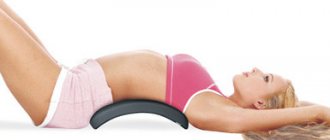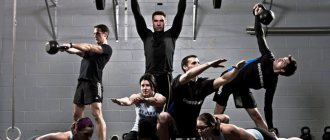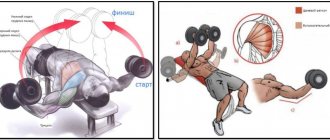The split is an indicator of stretching and good flexibility in its performer, so many professional athletes and amateurs strive to master this exercise or improve the technique.
Experts say: you can do the splits at almost any age. To achieve results you need desire, diligence, adherence to the training regimen and high-quality exercises that contribute to achieving the goal.
There are two main types of this sports element: longitudinal and transverse. Not so long ago, another type of this exercise appeared - royal twine. It became very popular at the suggestion of the famous film actor Van Damme.
There are, of course, more extreme types of splits, but this is already in the realm of circus and acrobatic tricks.
Twine for beginners
Splits are the dream of many girls. At all times, gymnasts, ballerinas or simply women with good stretching have amazed men. Agree that splits and the ability to do various gymnastic pirouettes look very impressive.
Before you start stretching, be sure to warm up your muscles to avoid injury.
If you have never done stretching, but really want to develop your flexibility, then read this article to the end, as in it we will give useful stretching tips for beginners and tell you which split exercises are especially effective.
What is twine for?
To begin with, I would like to say that twine is used in both ballet and gymnastics . This element is added to add spectacle. During training, gymnasts try to achieve the desired stretch as soon as possible, while few people care about the position of the spine and joints. Another thing is the splits in yoga. There is no pain, and maximum stretching is achieved by developing the hip joints. Thus, the muscles do not hurt, and the person acquires the ability to bend and twist in different directions .
Advice! To quickly achieve the desired results, stretch twice a day. At the same time, in the morning, exercises for longitudinal splits will be more difficult, since at night the whole body is at rest. But morning training will be much more effective, and should not be neglected. In the evening, muscles stretch more easily , so before going to bed it is best to consolidate the results.
You need to master the splits not only so that you can boast about your super stretch. In fact, the effect of this exercise is impressive .
- The mobility of the small pelvis increases.
- Blood circulation in the pelvic organs improves.
- Posture improves and the spine straightens.
- The abs and thighs are strengthened.
- Diseases of the genitourinary system are prevented.
While doing the exercises, you should feel a pleasant stretch and no pain! For maximum muscle relaxation, take a hot shower 15 minutes before class.
Twine for beginners video
So, if you are determined to do the splits, then you need to understand that the main thing in this matter is consistency in the exercises, as well as the correct execution of the exercises. This can be explained by the fact that if you exercise regularly, 3-4 times a week, you will be able to achieve what you want, but if you exercise from time to time, it will be extremely difficult for you to stretch and it will take much longer.
Proper execution of splits and general stretching exercises is a very important point, since during stretching, if the exercises are performed incorrectly or if the load is too heavy, it is very easy to damage ligaments and muscles, which can lead to injury for life.
Therefore, the easiest option for stretching at home is to practice video lessons, fortunately, they can be easily found on the Internet or you can use the video below. So you can see how to properly perform splits lessons for beginners. In the video you can understand how to hold your back, pull your toes and other subtleties of proper stretching.
Correcting crooked twine
What to do if, when performing longitudinal stretching, the pelvis “looks” to the side? After all, over time, back problems will begin. Elizaveta Zaretskaya, coach and founder of the network of studios “On the Splits”, who is the host of the author’s channel, will show a “crooked” performance and demonstrate exercises that will help you master the correct position by correcting a mistake. The basic rule: always monitor the pelvis and control its position, even if this does not allow the front leg to “go” to the maximum - the reason for the incorrect turn is precisely the overstretched front leg and the understretched back leg. For training you need a mat, a small pillow and two blocks.
Split stretch for beginners
Whatever your level of physical fitness, you can do the splits at almost any age. Of course, with age, muscles and ligaments become less flexible, “wooden,” but this does not mean that it is impossible to stretch them. You just need to put in more effort and spend more time.
Split stretching exercises for beginners and for the advanced level are essentially the same, the only difference is that when you take your first steps in stretching, you are unlikely to be able to perform the workout in the same way as the advanced level.
Do not immediately try to achieve great results through severe pain during your first workouts. Of course, stretching muscles is a rather painful process, but you still need to listen to your body and maintain a balance between comfort and pain. If, in pursuit of quick results, you begin to put a lot of stress on your body, then, most likely, you will not be able to do without injuries. And it is important for us, first of all, to take care of our health.
Also, it should be understood that muscle flexibility is partly the result of genetics and the initial data is different for everyone. For some, it will take two weeks to do the splits, and for others, six months. Do not despair if you do not achieve your goal in a short time, just continue training. And if you see progress, even if small, then you are on the right track, and you will definitely achieve the desired result and do the splits.
How to start training and make time for cross split training
You can and even need to start stretching at any age, if you do not have any health problems. The desired result can be achieved in different periods of time, either in a week or in several months. It will depend on your flexibility, which is what nature has given you.
How to start training and make time for cross split training
Where to start and how to practice in order to do the splits, this question worries everyone who wants to do the splits. First of all, you need to choose a set of exercises to stretch your beautiful legs. Exercises should be varied and involve all muscle groups involved in stretching.
Before exercise, be sure to do a warm-up and warm up properly. If possible, taking a hot bath will greatly increase your flexibility and help stretch your muscles.
If you perform all the exercises and recommendations correctly, you can learn how to do the splits. A great desire and a set task will help you do the splits and achieve the desired result.
Doing the splits for beginners
So, in order to do the splits for beginners, you need to know some rules that beginners often forget about.
You may be interested in: Stretching for Beginners
Firstly, before directly stretching, the muscles need to be warmed up. There are two ways to do this. The first is to lie in a hot bath. The second is to do any cardio exercise, it could be jogging, jumping or something else. In my opinion, the second method is preferable. At home, before stretching, you can jump rope for 10-15 minutes. You should not skip this point, because heated ligaments and muscles stretch much better and the risk of harming yourself is significantly reduced.
The next point of proper stretching is uniformity. That is, the muscles should be stretched approximately equally both, for example, on the left leg and on the right. If you do the splits on your right leg lower than on your left, then you need to work harder on your left leg to achieve even stretching.
Also, when stretching, stretch not only your legs to do the splits, be sure to stretch in general, doing exercises to stretch your back and arms.
Warm up. Don't miss out
Never skip warming up - this is the most important part of your workout. Before starting the exercises of the main complex, it is necessary to prepare the body for the loads and warm up the muscles thoroughly.
If possible, go for a short run in the fresh air or on a home gym.
To warm up, jump rope and do squats.
Another option for quickly warming up your muscles is a bath. It is enough to spend 10-15 minutes in hot water and it will be much easier to stretch.
An important warm-up exercise is leg swings. At the same time, there is no need to try to raise your legs higher. In this situation, swings are only necessary for warming up.
In addition to different muscle groups, the condition of the joints and the elasticity of the ligaments are important for the splits, which also need to be well kneaded.
Circular rotations are suitable for warming up the hip and knee joints.
Exercises for cross splits
So, transverse twine is a more complex type of twine than longitudinal twine. The standard period within which you can usually do the cross splits “from scratch” is six months.
In fact, there are not many exercises for the cross split, and the most important of them is trying to do the cross split. But some workouts can help you, and we will tell you about them now.
The first exercise is “frog”. Sit on the floor, keep your back straight, bend your knees and connect your feet with your soles, you can help hold them together with your hands. Now try to reach the floor with your knees, do springing actions with your knees towards the floor. Stay at the bottom for a few minutes. You will feel a stretch in the muscles of the groin and inner thigh. Then try to tilt your back down.
Then, proceed to the next exercise. Stand on your elbows, lean on your knees from behind, and try to press your butt down so that your legs move apart in different directions. At the lowest point, stay for a few minutes.
Then proceed to the cross split, try to sit on the split as low as you can, try to lean not on your palms, but on your elbows. Each time you do it, you will get better and better and eventually you will be able to overcome the cross splits.
You may be interested in: Pilates - exercises and lessons
To summarize, it should be said that good stretching is not the result of genetics, as many believe, but an achievement that can be achieved through perseverance and constant training. Remember that stretching is not only beautiful and impressive, but first of all, it is a step towards a healthy musculoskeletal system for many years.
Practice regularly, believe in yourself, and you will definitely achieve good results!
And one more thing - don’t be greedy and share on social networks!
This is the best gratitude for us...
For those who don’t like to wait: how to do the splits quickly
Many people dream of being able to do the splits. Of course, not everyone is so good at this: the younger a person is, the more pliable his ligaments are, however, this is not an indicator - even after being an adult you can do the splits. If you put effort into it. You need to exercise every day, devoting at least half an hour to training: first warm up the muscles, and then stretch. Many people want to cope with such a task as quickly doing the splits, but you should understand that speed in this matter is not a priority, because everything should be safe. Let's look at what you need to do to achieve your goal.
How to stretch the other leg
Anya Krylova, who works as a senior coach at the “On the Splits” network of schools owned by Elizaveta Zaretskaya, will help cope with a common problem - one leg is stretched well, but the other is not. This lesson, recorded for the School channel, demonstrates training that allows you to achieve uniform stretching of both limbs. They must be done regularly and ensure that they are performed correctly. It should be remembered: first you will have to spend time on cardio and joint warm-ups and prepare the muscles of the back of the thighs.
Scientific research has revealed the beneficial effects of stretching on the body: it promotes mobility and flexibility, helps protect tendons from injury, improves blood circulation, and makes the body slim and fit.
December 6, 2019
How to learn to do the splits: basic rules
Twine is beneficial in itself; it helps stretch ligaments and has a beneficial effect on joints. It also helps restore muscles after strength training. In addition, this exercise looks very impressive, so many would like to quickly do the splits at home.
Twine can be dynamic or static . Dynamic involves swinging your legs up to your head, static – the position of spread legs. Both types can be performed in the longitudinal and transverse directions.
The longitudinal split involves a leg position in which one leg is put forward and the other is put back. They form one line and seem to “continue” each other.
During a cross split, the legs are spread to the side. It is more difficult than longitudinal stretching, so it is recommended to master longitudinal stretching first.
Each split has its own preparatory exercises. But first you need to take into account the general rules that will help you quickly do the splits at home :
- You need to exercise every day. Half-hour daily classes are much more effective than multi-hour, but very rare ones. It is better to stretch twice a day - morning and evening. It is this kind of regularity that will help you achieve excellent results in just a few months.
- You should start stretching for the splits only after warming up exercises. Light cardio exercise will be enough: running, jumping rope, and so on. Never stretch ligaments that are not warmed up, as this can lead to injury that will require a long recovery.
- When exercising in a cold room, put warm socks or tights on your feet. If the ligaments are warm, the risk of injury will be significantly reduced.
- Half of the exercises in the program should be aimed at dynamic loads (swings), and half at static loads.
- When stretching, you need to keep your back straight.
- You must learn to relax - this will help prevent pain.
- Breathing also needs to be given enough attention. Inhalation and exhalation should be uniform, do not hold your breath.
How long does it take to do the splits?
Only a person whose ligaments are very flexible by nature can do the splits in a week. But this doesn’t happen very often—mostly, longer work is needed. A person who has always done stretching, but never set out to do the splits, may well master this exercise the first time. For other people who have not practiced before, the process of mastering the splits will take some time - from several weeks to several months, depending on the level of training and the characteristics of the body.
Also keep in mind that quickly doing the longitudinal split is much easier than doing the more difficult transverse split, so you should master this variation first. A completely acceptable goal that you can set for yourself is to do the splits in a month. This is the period you can focus on when creating a training program for yourself.
How to do the splits quickly: exercises
If you are wondering how to quickly learn to do the splits, regularly perform the exercises suggested below.
Exercise 1. Dynamic exercises - leg swings
In this exercise you need to swing and raise your leg as high as possible. Thanks to the inertia of the swing, the lifting height increases. Swings are done in a standing position: forward, backward and to the sides. 20-30 swings in each direction .
Another monitor lizard swings from a position lying on its side. At the same time, the leg rises up and then falls towards the head. You can hold it near your head and then lower it back.
Exercise 2. Tilts from a vertical position
All kinds of bends are aimed at stretching the body and legs. Also, most vertical bends tend to stretch the hamstrings.
You need to stand up straight and straighten your back. Tilt the body forward and then down. At the same time, do not bend your knees and back, do not bend in the lower back. Already halfway through the incline you will feel tension under your knees. A rounded back helps you bend lower, but the meaning and effectiveness of the exercise are lost.
Exercise 3. Working with the ballet bar
The crossbar, which is fixed horizontally along the wall, is called a ballet “barre”. With it you can perform many effective exercises that help you do the splits. The starting position is always the following: you need to stand on one leg, lift the second and place it with your heel behind the bar. To maintain balance, you can hold on to the machine with your hands.
- Squat down to keep your raised leg above the bar.
- Tilt your body to the side, down, forward, while leaving your foot on the bar.
- Move your foot along the bar to the sides and forward. In this case, the leg that is on the floor should remain motionless. If the body is facing the bar, the leg will “move” to the side, and this will be a cross-split stretch. In the lateral position, the leg can move forward or backward, and in this way you will prepare yourself for the longitudinal split.
If you practice at home and don’t have a ballet bar, you can use a wall bars, the edge of a table, bed, or nightstand as one. You can also diversify the training by working different groups of ligaments, changing the position of the foot. If the foot and toe are stretched along the same line, one group of ligaments will be stretched, but if you place the foot at a right angle to the knee and point your toes up or pull towards the knee, you will work other ligaments.
Bending on the floor to stretch ligaments
These exercises are done on the floor. They stretch the ligaments of the calves, groin, and popliteal ligaments.
- Sit on the floor, spread your legs to the side, bend one of them and pull your foot towards the inner thigh of the other leg. In this position, tilt your body, while trying to stretch your arms forward along the floor as much as possible.
- Place almost the same, only one foot rests on top of the thigh of the second leg. From this position, tilt your body forward.
- Exercise "Butterfly". Bring your feet together, pull them towards your groin, and from this position try to place your knees on the floor. If it’s difficult, you can help yourself with your hands, lightly pressing them on your knees and trying to lower them down.
- Bends from the butterfly position. The body should be tilted as close to the floor as possible, and the arms should be pulled forward. To track your progress, you can draw a line on the floor that you will reach for, or put an object in its place. Having reached the intended place, move your border a few centimeters and reach towards it.
- Spread your legs to the sides. Do the same bends forward, trying to touch the floor with your chest and stomach. After a month of training, you will be able to do not only this, but also complete folding - you will be able to place your torso between your spread legs. This exercise can be either static or dynamic. In the static version, the tilted body must be held in this position for up to a minute.
- From a position with your legs spread to the side, tilt your body to the sides, forward to each leg.
You need to finish the exercises with restorative actions. After finishing stretching, take a warm shower or bath, apply a warming cream to the area being worked on, which will help improve blood circulation and relieve pain.
Longitudinal split exercises
The best thing to start with when stretching to the longitudinal splits is “lunges”. They will perfectly prepare the muscles to achieve the desired result. Thanks to the set of exercises that Ekaterina Buida offers , you can master the longitudinal splits after just 30 days of regular training.
- Starting position - legs together, back straight, crown stretched upward. Slowly tilt your body forward and place your hands on your knees. At the same time, the back remains straight, and the tailbone stretches upward. You need to freeze in this position for 10 seconds.
- Slowly straighten up and move on to another exercise. Raise your right leg and press your knee to your chest. We also freeze in this position for 10 seconds. We move into a shallow “lunge” - we move our right leg back, press our heels to the floor, and place our hands on the knee of our left leg. Maintain the position for 10 seconds.
- We repeat the exercise, only this time we hold it for 5 seconds instead of 10, then 3 seconds. We complete the complex by performing the same movements for inhalation and exhalation, holding for only 1 second - 10 times. We finish the exercise and return to the starting position.
- We repeat the entire previous point, changing sides. Now the left one will be the working leg, and the right leg will be the base. We return to the starting position.
- We place our feet slightly wider than shoulder level, spread our arms to the sides, and pull our neck up. We begin to bend left and right, listening to our breathing, while trying to stretch the lateral muscles as much as possible.
- We repeat points 2 and 3, while making the “lunge” a little deeper. We try to pull the heel and tailbone to the floor, and the top of the head up. When finishing the exercise, we remain in the “lunge” position.
- While in a “lunge”, we begin springy movements up and down with the pelvis - 10 times.
- We change sides and repeat the springy movements - again 10 times. In this case, the crown of the head is pulled up, the tailbone is pulled down, and the shoulders are straightened. We return to the starting position.
- We place our hands even wider than shoulder level and spread our arms to the sides. We stretch the top of the head up, the tailbone down. We begin to bend to the sides, reaching for our hand, practically lying on it. We perform an exercise on inhalation and exhalation.
- From the same position we bend forward - the back is straight. We lower our hands to the floor - first only the fingertips, and hold for 10 seconds. Next, we lower our hands onto our palms and also hold for 10 seconds. The last stage is to lower your hands to your elbows and also freeze for 10 seconds. If this is still difficult for you to do, place a support in front of you, gradually descending lower and lower. Carefully move into the “lunge”.
- We make a deeper “lunge”. The right leg is in front, bent at the knee, the left leg is behind, straight. We begin to “spring” by moving up and down - 10 times.
- Smoothly lower your left knee to the floor, without leaving the “lunge” position, your hands remain on your right knee, your back is straight. We stay in this position for 10 seconds. Maintaining the pose, we move our hands to the floor. We try to move smoothly to avoid pain. Again hold for 10 seconds. We lower our hands to our elbows. Moreover, the lower you can do this, the better. We pause for a while and rise, first straightening the outer arm, then the inner one. We move slowly.
- We push the pelvis back, straighten the right leg and pull the toe towards us to achieve maximum stretching of all joints and muscles. In this case, the palms remain on the floor, the back is straight, the top of the head stretches forward. As you inhale, we move into a “lunge”; as you exhale, we straighten your right leg and press your forehead to your knee. We repeat the exercise 10 times.
- Remaining in the same position, we again lower our hands to our elbows, moving very carefully. We freeze for 10 seconds and return to a deep “lunge.”
- We perform springy movements up and down - 10 times.
- Let's move on to the "vertical splits" exercise. To do this, while remaining in the “lunge” position, we move our hands on the palms slightly forward, the right leg is bent at the knee. Raise your left leg at a right angle - rest on your hands and right leg. Next, we pull our free leg up, and try to press our forehead to our right knee. We freeze for 10 seconds.
- As we inhale from the “vertical splits,” we move on to the next exercise. We squat down and lean on our fingers and toes. As you exhale, raise your pelvis, straighten your legs, press your forehead to your knees, and press your heels to the floor. Repeat 10 times. We return to the starting position.
- Starting from point 10, we repeat the entire set of exercises, changing sides. That is, now the right leg will play the role of support, and the left one becomes the working one.
If all these exercises are performed well, the result will not take long to arrive, and after 30 days of regular training you will be doing the splits. There is no need to rush in this matter, as you can damage joints or pull muscles , as a result of which you will have to stop all training.
Features of cross twine
Those who have already mastered the side split can start working on how to quickly do the side split. It should be noted that this is quite difficult. It happens that a person can do a longitudinal split in a few weeks, but transverse stretching is possible only after a year of regular training.
To master cross splits, do the following exercises :
- Perform all stretches not in the longitudinal, but in the transverse direction. Their dynamic load will benefit from side swings.
- Try to move from the longitudinal position to the transverse one. For example, lift your leg onto the bar to stretch longitudinally, and then, without removing your feet, turn your body to face the barre, in a transverse position.
- If you are already doing the longitudinal splits, use a bench or chair to enhance the stretch. You need to stretch more than 180 degrees. Thanks to the additional support, you can go lower by increasing the stretch angle.
With these exercises you can achieve your goal. There may be times in your workouts when you feel like you're standing still. In this case, the main thing is not to give up and not stop studying. Continue to persistently perform the exercises, and one day you will still achieve the coveted splits.
Also, if you want to do the splits quickly, videos on this topic will be useful to you. We invite you to look at some of them.
Cross twine
Those who have mastered the spectacular transverse version will perform the longitudinal split without much difficulty. When performing this figure, the legs are spread apart (across the body). When performing this element, the body can be held straight or lowered parallel to the floor.
To do a cross split, you will need elastic muscles of the groin, buttocks, back of the thighs, and stretched tendons under the knees. This kind of split makes it possible to work out the hip joints very well.
How to do the splits at home: exercises, video lesson
The ability to do the splits means developed flexibility and elasticity of the muscles, as well as the absence of salt deposits in the joints. The ability to do the splits is perfect control of your body, a beautiful manner of movement, excellent plasticity, an easy gait. You can learn to sit on a sword at any age. It is important to remember that, as in any other sport, there are no easy achievements. Therefore, to achieve your goal you need a determined attitude, willpower and daily 20-30 minute training.
Where to begin?
Before starting a set of stretching exercises to do the splits, be sure to warm up your muscles well. To do this, you need to warm up for 10-15 minutes.
Warm-up for splits for beginners at home:
- Circular movements of the head;
- Tilts of the body to the sides, forward, backward;
- Swing your legs to the sides, forward, backward;
- Squats;
- Jumping rope;
- Running in place;
- Push ups;
- Abdominal exercises at a fast pace.
The order, number of repetitions and pace of warm-up exercises can be changed at your discretion. The main thing is to work well and warm up all the muscles and joints, thereby preparing them for stretching for the splits.
Split stretch for beginners
In order to do the splits, beginners need to do proper stretching at home. Properly performed stretching exercises will improve blood circulation in the sacrum, pelvis, abdominal cavity, joints and ligaments. Stretching exercises will improve posture, help normalize intestinal function, burn fat on the hips and abdomen, and prevent and heal varicose veins.
Systematic stretching exercises will train weak muscles, which will subsequently be able to withstand significant loads. Proper execution of stretching techniques means a gradual increase in the mobility of the sacrum and hip joints, while eliminating overexertion of the lower back. When performing exercises, all ligaments necessary for effective stretching should be involved.
It is necessary to stretch the muscles until slight painful sensations occur. In this case, you should wait 15 seconds; if the pain does not go away, then the load should be reduced. There is no need to hold your breath while doing exercises at home. You should breathe evenly and deeply, saturating the muscles with oxygen, thereby helping to stretch better.
However, before you start doing stretching exercises to do the splits, you should make sure that there are no contraindications for health reasons.
Stretching for splits is contraindicated when:
- Various spinal injuries;
- Bruised legs;
- Lower back pain;
- Inflammation of the hip joints;
- Cracks in bones (especially the pelvis);
- High blood pressure.
Exercises
For high efficiency, you should perform a set of stretching exercises every day, in the absence of time, at least three times a week. The exercises are performed alternately with each leg for 30 seconds to 1 minute. In the final position, be sure to be fixed for a short period of time.
Stretching exercises for splits for beginners at home:
- Hamstring stretch - Stand with your knees on the floor, back straight, arms at your sides, gaze forward. Lunge forward with one leg without bending your knee. Bend your torso forward towards your feet, touching your palms to the floor. The shoulders should be level and the back leg should be straight.
- Anterior Thigh Stretch - Get down on your knees, resting your elbows on your hands, palms flat on the floor. Buttocks touch heels, look forward. Lunge with one leg back until it stops, without bending the knee joint. Fix, return to the starting position.
- Lateral leg extension with an inclination - Sit on the floor, connect your heels to each other. Back straight, clasp your feet with your hands. Extend your left leg to the side, the right leg should be pressed to the floor. Place your right hand along your head so that your shoulders are level. Use the fingertips of your right hand to reach the toes of your outstretched left foot.
- Bends - Sit on the floor, spread your legs as far apart as possible. Back straight, hands behind back. Bend your body first towards one foot, then towards the other.
- Fold - Sit on the floor, straighten your legs and extend them forward, point your feet towards the body. Straighten your arms and raise them up. Without rounding your back, bend your body forward, trying to reach for your arms as far as possible.
- Half-step on your back - Lie on your back with your legs and arms extended along your body. Raise one leg up, clasping the boot with your hands. Focus on the second leg, bent at the knee.
- Foot adduction - Sit on your knees, pressing your buttocks to your heels. The back is straight, arms are extended along the body. Sitting on the heel of one leg, stretch the other leg back. Then bend the extended leg at the knee, clasping the boot with your hand. Stretch the leg muscles as far as possible.
Warm up before exercise
Before starting a lesson, you need to thoroughly warm up your muscles to prevent injuries and sprains. Warming up for longitudinal splits with Katerina Buida will help in this matter.
- We stand in a comfortable position, straighten our back and legs, place our hands on our belts, and stretch our entire body upward. We begin to warm up the neck - tilt it to inhale and exhale, first forward, then back, right, left. We repeat the complex 4 times and make 2 circular movements with the head - first in one direction, then in the other.
- Next, the warm-up moves on to the shoulders - arms parallel to the body. We raise our shoulders up as we inhale, and as we exhale we lower them down – 4 times. Circular movements of the shoulders - back and forth.
- When you inhale, pull both arms up, and when you exhale, lower them. Repeat 2 times.
- We begin to stretch the knee joints. We stand up straight, hands on our belts. We perform the exercise in this order: knees half bent - heels lifted off the floor - heels placed on the floor - legs straightened. Repeat 10 times.
- Straightened up, stretched up, relaxed. Place your palms on your knees, legs half bent, back straight. We begin circular movements with our knees, first 5 times in one direction, then 5 times in the other.
Be sure to warm up to prepare your muscles for the main exercises.
How to do the splits for children
Many adults mistakenly believe that all children are flexible by nature and will be able to do the splits without special training. In reality, systematic, daily training is necessary for the development of plasticity in children. It is believed that the best age for learning splits is 5-7 years old, when the child’s muscles are quite flexible and elastic.
At home, you should start with daily exercises, then gradually move on to warming up, and then to stretching to the splits. In this case, the child must share his feelings with adults. If pain occurs, you should immediately stop the exercise and move on to the next one. Training should be a pleasure for the child, which will allow him not to discourage him and help him do the splits faster.
Unwarmed muscles should not be stretched into splits under any circumstances. A five-minute warm-up will be sufficient to warm up the muscles. You can swing your legs to the sides, bend your torso, squats, and run in place. For variety, it is recommended to change the order of performing the warm-up exercises every day. After the muscles have warmed up, it’s worth starting to stretch your children using different types of splits at home.
Split stretch for children at home:
- For longitudinal - Standing on your knees, stretch one leg alternately, then the other forward, trying to bring your pelvis as close as possible to the floor. In this case, it is necessary to ensure that the extended leg is straight and does not bend at the knee.
- For the transverse one - spread your legs to the maximum possible level, stretch your arms forward. You should gradually bend your arms, reducing the separation from the floor. It is important to teach your child to transfer weight from his hands to his feet.
Stretching for transverse and longitudinal splits at home should be under adult supervision. You should definitely stand next to the child and support him by the shoulders at first. To begin with, you should stretch until you feel slight pain in your muscles. Systematic exercises will bear fruit and after a month or two, depending on individual flexibility, the child will be able to do the longitudinal and transverse splits.











